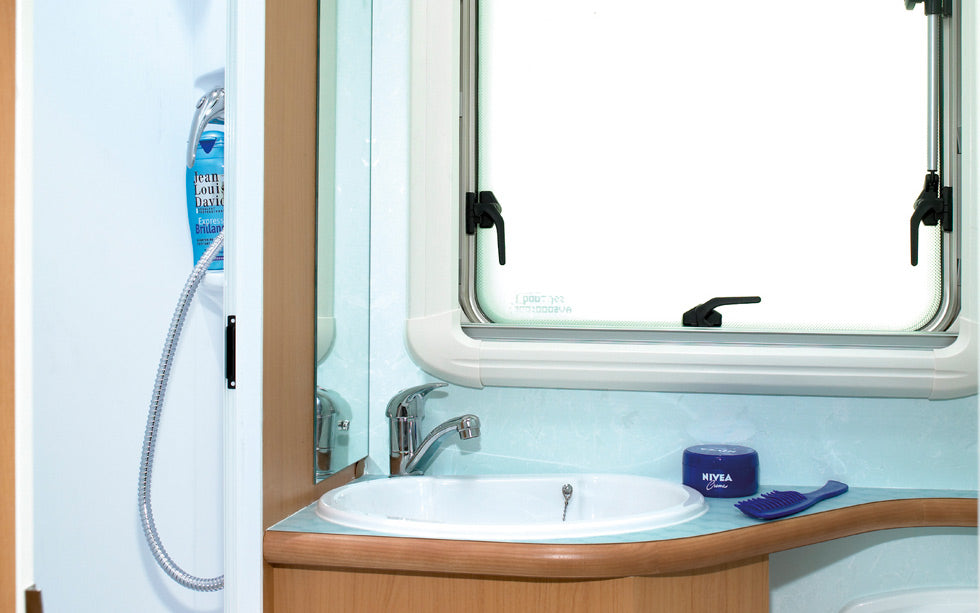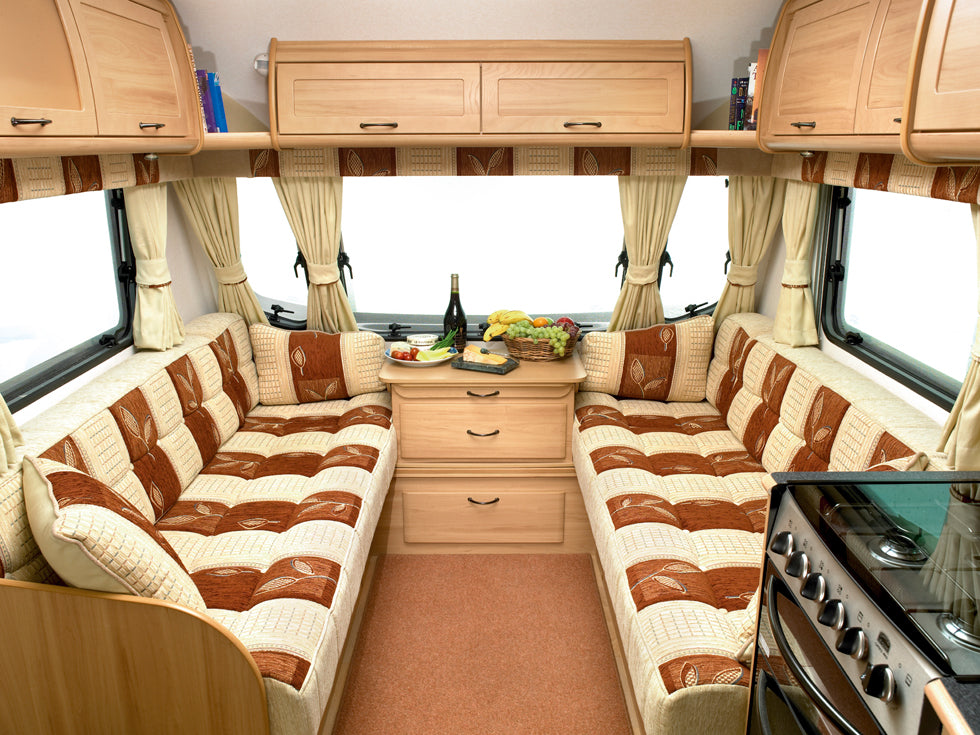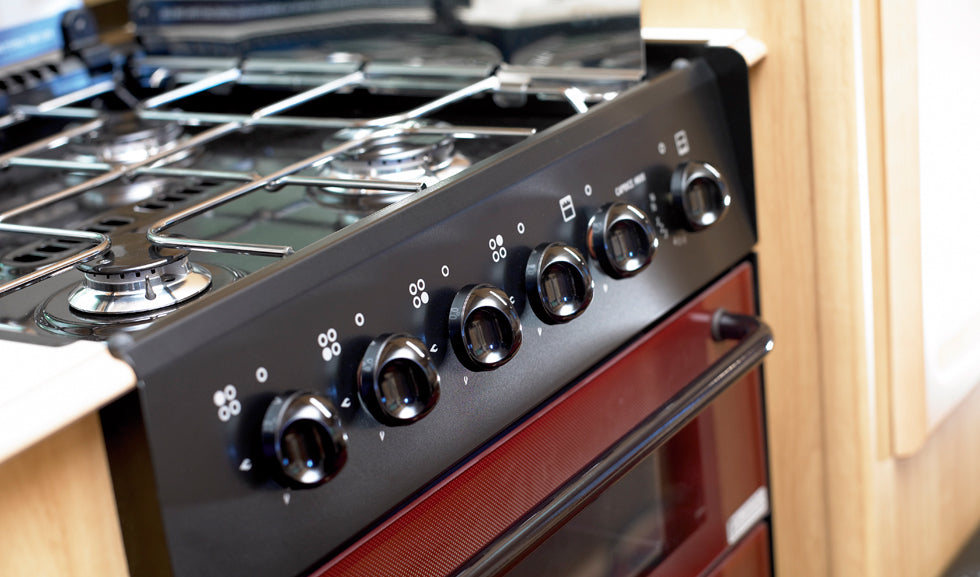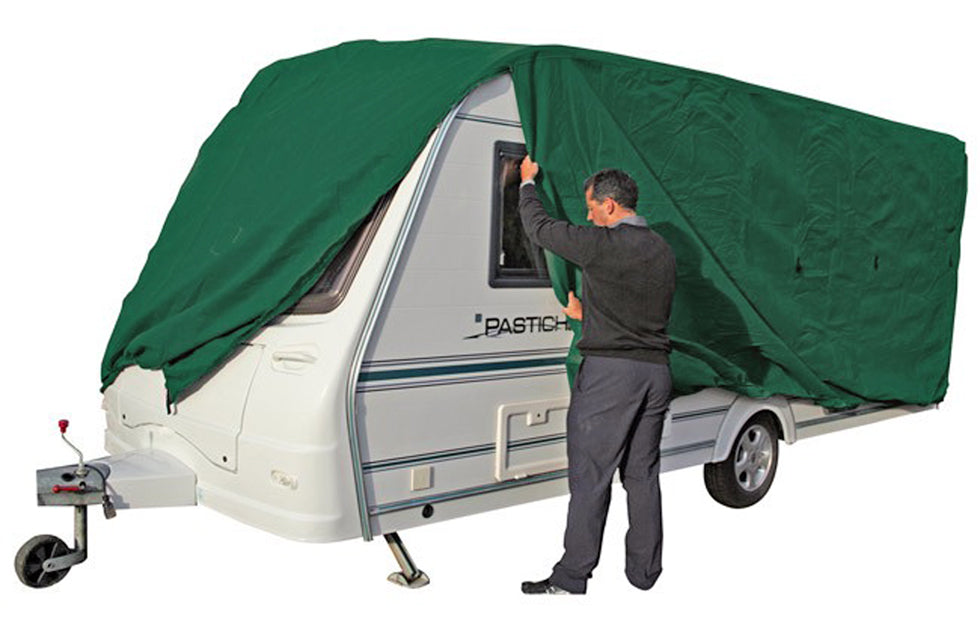As Autumn approaches, many minds turn to storing the caravan away for the winter. If your caravan is to be stored idle for the winter months, a little preparation can save headaches and sometimes considerable expense when the caravan is brought back into service the following springtime.
Following this checklist of “to-dos” will help you prepare your caravan and keep it in good condition throughout the winter.
In addition to this list, which is worth allowing a day to work through, you should make regular visits to your caravan and inspect for problems paying particular attention to frost and damp.
A hand-held damp detector is a useful item to carry with you when checking your caravan over the winter.
Water Supply:

- Completely drain the water system, opening all the taps and the main drain plug. This can take some time to drain so beginning here is a good idea - you can do other wintering chores whilst the water is draining. (TIP: If you know you are on the last trip of the season you can allow the system to drain on your journey home). Leave the inside taps open to prevent pressure build up.You can also drain down your caravan water system with Floe drain down kits - see our guide to drain-down kits
- Remove your water filter to prevent damp and frost damage
- Drain thoroughly any water carriers. Leaving the caps off gives ventilation (but store away from the risk of bugs and insect entry). Keep caps safe - over a period of a few months small caps can easily go astray - or put them in a carrier bag and tie the handles of the bag to the carrier)
- Plug all water inlet and waste outlet points to prevent bugs and insects entering
Toilet:
- Drain the flush tank and clean with Water Tank Cleaner to prevent deposits of pollutants during storage
- Thoroughly clean the cassette. A cassette cleaner such as Thetford Cassette Tank Cleaner removes stubborn calcium deposits.
- Coat the seals and blade with Thetford Maintenance Spray to prevent corrosion and seal damage. Thetford spray is specially formulated for use on toilet seats and should not be replaced by “general maintenance sprays” of the kind found in DIY stores.
- Replace the cassette leaving the blade open to prevent it sticking in place.
Interior:

- Now is a good time to remove everything from your caravan. If all the bits and bobs that accumulate over the season are removed, you will be returning in the spring to a clean, empty caravan - just as you did when you first took delivery of it!
- Remove all cushions and upholstery and ideally take home to store. If you really don’t have the space at home, then stand all the cushions on-end where air can circulate all around them and prevent them being attacked by damp. Bedding and pillows should really be removed for the winter.
- Clean out all the cupboards well and take away any food or perishable items. Although the contents of tinned foods should keep over winter, should you be unlucky enough to develop a little damp in your kitchen cupboard, rust rings from the bottom of tin cans are unsightly and damaging.
- The fridge and freezer should be carefully cleaned. Prop the door ajar to allow air to circulate and prevent odour build-up.
- Vacuum all floors and carpets.
- A spider-friendly repellent such as “No More Spiders” helps to discourage "livestock" making your caravan their winter home, without killing or harming spiders.
- Don’t forget to empty all waste bins!
- Remove all clothing, towels etc from the caravan and take home.
- Leaving a few dehumidifiers or moisture traps in the caravan, in closets etc. will help combat any damp that may develop and prevent damp damage. These can be checked and renewed/recharged if necessary when you check on the caravan periodically.
Exterior - Windows and Vents:
- Open all the windows and thinly lubricate all the window seals. This prevents sticking of windows when they are opened after the winter (and in the worst cases tearing or damage to the window seals).
- Close all windows and vents. Double check all windows and vents are closed and locked, leaving no openings for bugs and spiders to gain easy entry. However DO NOT block up vents, air circulation is vital otherwise the air will become stale, and any damp problems will set in far worse without air circulation.
Exterior - Bodywork:
- Wash and Polish the exterior of the caravan with a good quality Caravan Cleaner. It is worth checking with your caravan manufacturer which cleaning products are permissible to use on your caravan, especially if the van is still under warranty.
- Once the caravan is dry, a coat of Fenwick's Overwintering Fluid gives a protective winter coat, inhibiting algae growth, protects against pollutants and makes much lighter work of the springtime wash at the start of the new season.
Gas & Electric:

- Remove gas cylinders and store in a ventilated location. If you have nowhere safe to store gas bottles, then ensure that cylinder valves are closed (off) and that the gas locker is locked shut.
- Remove the leisure battery or batteries and take them home or store somewhere warm and dry. Use a quality battery charger to keep the charge topped up periodically (about once a month)
- Spray your 12N & 12S plugs with a proprietary water dispersal / sealing spray.
Before Covering:
- Remove the wheels and fit a pair of winter wheels. This prevents damage to caravan tyres caused by standing in one place for extended periods and is especially important where the caravan is to be stored on concrete/hard standing. Winter Wheels that lock in place are also a useful security measure - and may indeed be a requirement for your caravan insurance.
- Store the wheels somewhere safe from theft, away from the caravan (NOT inside or close to the caravan, this may invalidate insurance!) and away from direct sunlight. If covering the wheels use a breathable covering and not watertight plastic or tarpaulin.
- Lower and lock the corner steadies.
- If you have not yet fitted winter wheels, then securely chock the wheels.
- Release the handbrake - leaving the handbrake applied can size the brakes on over a long period of time.
- Use a good insect repellent powder around all areas of contact with the ground (winter wheels, jockey wheel, corner steadies). Renew this powder each visit when you check on your caravan.
Covering:

- Cover the hitch with a weatherproof hitch cover
- Cover the caravan with the correct size of Breathable Caravan Cover. Breathable caravan covers are designed to be weatherproof but not a completely watertight seal, allowing any moisture to escape and prevent condensation and damp forming whilst in storage. Use our Caravan Cover Sizing Guide for instructions on measuring your caravan for a cover.
- NEVER substitute a breathable cover with plastic sheet or tarpaulin. A coat of overwintering fluid and no cover is always preferable to a completely sealed plastic sheet which can trap moisture and cause serious problems.










